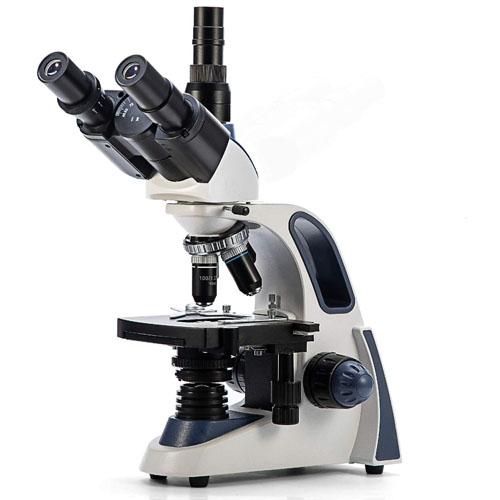
Physicists have created the world’s fastest microscope, and it’s so quick that it can spot electrons in motion.
The new device, a newer version of a transmission electron microscope, captures images of electrons in flight by hitting them with one- quintillionth-of-a-second electron pulses.
This is quite a feat: Electrons travel at roughly 1367 miles per second (2,200 kilometers per second), making them capable of circumnavigating the Earth in only 18.4 seconds.

We've named this as the best microscope for students overall. Packed with features it scored 4/5 stars in our Swift SW380T review. It has an XY mechanical stage, three objectives for up to six different magnification levels, and the binocular 30-degree tilt eyepieces help reduce neck strain. It's even compatible with an add-on camera.
By using the microscope on the tiny particles, the researchers hope to make some new discoveries on how they take flight. The researchers published their findings Aug. 21 in the journal Science Advances.
"This transmission electron microscope is like a very powerful camera in the latest version of smart phones; it allows us to take pictures of things we were not able to see before – like electrons," lead-author Mohammed Hassan, an associate professor of physics and optical sciences at the University of Arizona, said in a statement. "With this microscope, we hope the scientific community can understand the quantum physics behind how an electron behaves and how an electron moves."
How electrons arrange and rearrange themselves inside atoms and molecules is an essential question in both physics and chemistry, but the zippy nature of the tiny particles makes them incredibly difficult to study.
To create an exposure time capable of capturing electron movements, physicists developed methods to generate tiny attosecond (or 1X10^-18 seconds) pulses in the early 2000s — an advance which earned the scientists who made it the 2023 Nobel Prize in physics.
By decreasing the exposure time of microscopes to the scale of a few attoseconds (an attosecond being to a second what a second is to the age of the universe), physicists have untangled how electrons carry charge, how they behave inside semiconductors and liquid water, and how chemical bonds between atoms rip apart.
But even the few attosecond scale is too big to capture the individual motions of electrons. To accomplish this, the physicists behind the new study tweaked an electron gun until it produced a pulse of just one attosecond.
These pulses hit the "sample" being studied, and as the electrons pass through it, they slow down and change the shape of the electron beam wavefront. The slowed beam is then magnified by a lens and then hits a fluorescent material that glows when the beam lands on it.
By pairing the electron pulse with two carefully synchronized pulses of light (to excite electrons in the material into motion and assist in the creation of the electron pulse respectively) they were able to probe the ultrafast movements of electrons inside atoms.
"We are able to attain attosecond temporal resolution with our electron transmission microscope – and we coined it 'attomicroscopy,'" Hassan said. "For the first time, we can see pieces of the electron in motion."







